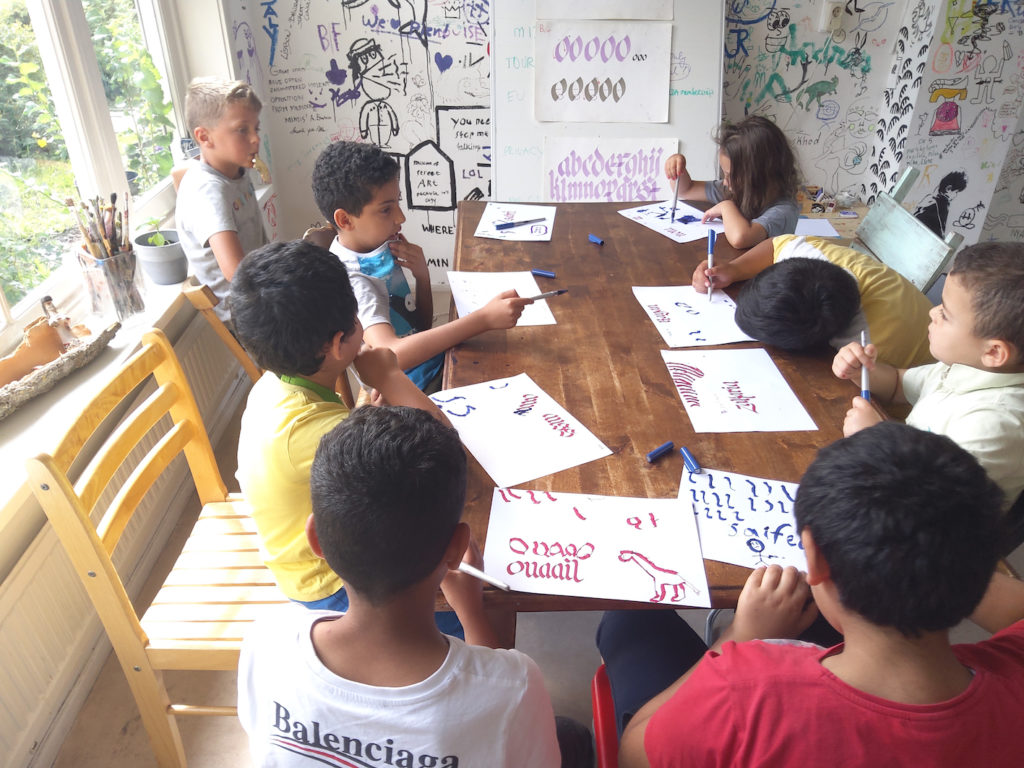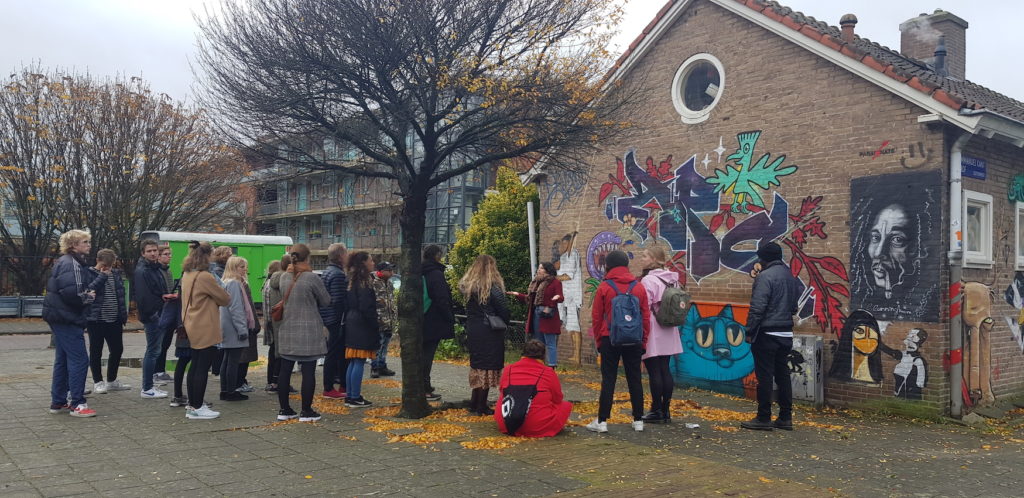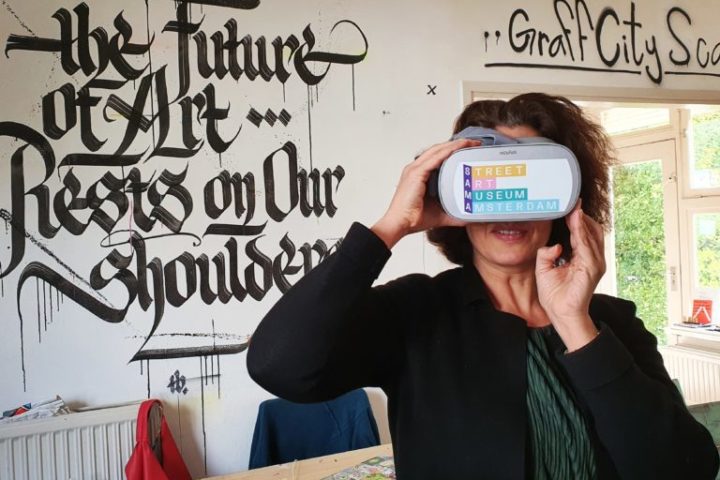
Roberto Riccardo Alvau; Anna Stolyarova
Intern at SAMA; founder at SAMA
Museums have no borders,
they have a network
May 14, 2021
Key Words: Social Relevance; Museology; Community; Co-creation; Inclusion
Contemporary art is, by definition, a fickle and multi-faceted art practice characterised by a global variety of techniques, materials and productions. Since the 1960s, movements such as Fluxus or the first performers, such as Allan Kaprow and Yves Klein, have radically transformed the way in which art is experienced and produced by introducing into the art history narrative new forms of art-making involving public action and participation. Art has progressively lost its sacred aura (Benjamin, 1935, p. 4) to become more democratised and has sought a new role in social, political and cultural practice. Although contemporary art is first and foremost a critical and subversive practice, it is also a ’state of encounter’: a cultural medium for social cohesion, through which it is possible to establish debates and build new types of social relations (Bourriaud, 1998, p. 18). As a result, the art object has become dematerialised and fragmented to the extent that it has forced museum institutions to question their role as ‘art distributors’. These institutions are reinventing their spaces with a view to offering the general public an experience that is as inclusive and participatory as possible.
Emergence of ‘radical museums’
Over the last 40 years, the 19th-century model of the museum as a patrician and elitist cultural institution has gradually given way to a proliferation of new hybrid ‘anti-hegemonic’ institutions: ‘more experimental, less determined, and offering a more politicised engagement with our historical moment.’ (Bishop, 2013, p. 6). To paraphrase Bishop in her famous essay ‘Radical Museology’, the new museums’ aim is to understand contemporary art as a dialectical method and a socio-political project where the visitor not only views the artworks, but can also understand them, engage with them, thus establishing a social and cultural connection with them. The ‘radical museum’, according to Bishop, is solidified through a triple action: reimagining itself as an active, historical agent capable of questioning the cultural past and giving voice to marginalised or forgotten practices and minorities; eliminating the auratic contemplation of individual works by the spectator and at the same time ‘defetishizing objects by juxtaposing work of art with documentary materials, copies and reconstructions.’
In recent times, many art institutions have added to their traditional functions numerous social and cultural practices to raise visitors’ awareness of history and art. The current modernisation of museum spaces has led to the creation of a whole range of activities that make the museum a laboratory of participation and social connections, with workshops for young people or research projects that involve professionals from multiple disciplines. Temporary exhibition programmes are developed along with participatory activities to understand the ultimate meaning of the exhibitions and cycles of experimental shows, in line with the latest artistic trends.

Museum as social actor: the Street Art Museum of Amsterdam
Created in 2012, the Street Art Museum of Amsterdam (SAMA) holds a collection of more than 300 contemporary art works displayed throughout the city’s different neighbourhoods. Mainly located in the city’s Nieuw-West district, the aim of the museum is to disseminate and preserve urban art, but also to create a citywide reference point for street art. SAMA’s artworks are realised in participation with the neighbourhood community, who is free to take part in all the necessary steps: from the choice of artwork to direct participation in artworks creation. Through the latent participatory power of street art as a form of collaboration, a micro-community is created within the neighbourhood, united by the feeling of shared identity.

In line with Bishop’s theories and the notion of participatory art, SAMA is committed to organising social events that can activate Nieuw-West’s and greater Amsterdam’s youth population, opening them up to the world of urban art. During the past nine years, the museum has run inclusive projects such as Food4Smiles or Midzomer Mokum, and offered artist residencies that have allowed the Dutch urban movement to grow and mix with European, Asian, African, and Latin trends. Multiculturalism in art and society is a firm point of reference for SAMA in understanding and making art. Currently, the museum is developing a series of public activities designed to revive the daily cultural life of Amsterdam’s youth. With the restrictions imposed by Covid-19, SAMA believes it is of capital importance to promote social, public and environmentally compromised art. During the months of March and April 2021, for example, SAMA launched a podcast in partnership with the students from a local college, in which the history and activities of the institution were narrated from the point of view of the young inhabitants of Nieuw-West, who have grown up together with the institution throughout the past decade. It also inaugurated the ‘Urban Art Oasis’ cycle of events, also held in March and April with the purpose of creating a safe space for artistic creation and social encounters for the district’s youth.
With these initiatives and more, SAMA is adopting a radical new paradigm that has been influencing the museological sphere in recent years: anti-hegemonic museums/socially engaged art museums. As anticipated by numerous institutions and critics in the sector, it is necessary today to rethink the nature of museum facilities, to accommodate new artistic practices beyond museums’ walls, but also to create a space for social art, where the visitor can become an active agent for the culture of his surroundings.

References and resources
Benjamin, W. 1969. The Work of Art in the Age of Mechanical Reproduction. New York: Schocken Books.
Bourriaud, N. 2002. Relational Aesthetics. Dijon: Les Presses du réel.
Bishop, C. 2014. Radical museology: or, What’s ‘contemporary’ in museums of contemporary art?. London: Koenig.
Street Art Museum Amsterdam website: https://www.streetartmuseumamsterdam.com/
Food4Smiles project: https://www.streetartmuseumamsterdam.com/food4smiles
Midzomer Mokum project: https://www.streetartmuseumamsterdam.com/midzomer-mokum
Dutch Urban Art Movement: https://www.streetartmuseumamsterdam.com/post/art-impulse-geuzenveld
Urban Art Oase 2021 activities: https://www.streetartmuseumamsterdam.com/urban-art-oase
Calandlyceum Podcast: https://www.streetartmuseumamsterdam.com/cultuurfonds-calandlyceum-podcast
About SAMA:
Sen, A. 2021. ‘In Conversation with Street Art Museum Amsterdam Founder, Anna Stolyarova’, Made In Bed. Available at: https://www.madeinbed.co.uk/interviews/anindya-sen-in-conversation-with-street-art-museum-founder-anna-stolyarova
More about the Magic Dozen – Street Art in Amsterdam Nieuw-West exhibition: https://www.streetartmuseumamsterdam.com/post/the-exhibition-magic-dozen-is-open
Office Walk With a Twist | Anna Stolyarova | TEDxAmsterdam Schiphol Side Event: https://www.youtube.com/watch?v=8tJyhu–viU&t=5s&ab_channel=SpotSchipholCommunity
2016. ‘State of the Art’, Mobile Marketing, Issue 24, p. 14. Available at: https://issuu.com/davidmurphy/docs/mobile_marketing_september_2016
Klaassen, N. 2016. ‘How Amsterdam is reshaping reality as we know it’, The Drum. Available at: https://www.thedrum.com/industryinsights/2016/09/28/how-amsterdam-reshaping-reality-we-know-it
Hanc, J. 2017. ‘Museums With Ideas, Goals and Sometimes Art. But Walls? No’, The New York Times. Available at: https://www.nytimes.com/2017/03/14/arts/design/museum-of-homelessness-london-no-building.html?_r=0
